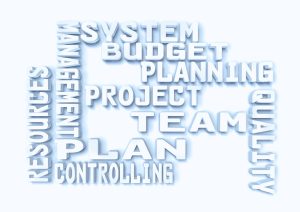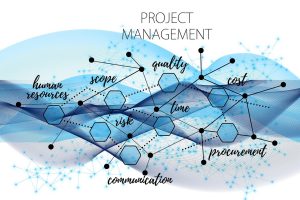
Even the best-laid plans can sometimes go awry, same with projects which can run into trouble. Despite good intentions, projects often fail more frequently than one might expect. The root causes of these failures typically lie in avoidable mistakes and challenges that project managers encounter daily. By understanding these causes, organizations and project managers can adopt proactive strategies to enhance the success of future projects.
1. Lack of Clear Objectives and Scope Creep
A frequent cause of project failure is the absence of well-defined objectives from the start. Without clear goals, projects lack direction, leaving team members uncertain about their roles. This ambiguity can lead to scope creep, where additional tasks and changes are introduced without considering their impact on the project. Such scope creep can derail a project, stretching resources too thin and causing delays and budget overruns.
2. Inadequate Planning and Risk Management
Effective planning is fundamental to any successful project. However, many projects falter due to insufficient planning, often resulting from underestimating the time, resources, and skills required. Additionally, a failure to identify and mitigate risks early can lead to unforeseen challenges that could have been avoided with proper risk management. Without a robust plan, projects are more likely to encounter unexpected obstacles that disrupt progress and lead to failure.
3. Poor Communication
Communication breakdowns are a significant challenge in project management. Unclear, infrequent, or inconsistent communication can lead to misunderstandings, misaligned expectations, and missed deadlines. Poor communication can also erode trust among team members, stakeholders, and clients, complicating the project further. Ensuring open communication channels and a free flow of information among all parties is crucial for keeping a project on track.
4. Unrealistic Deadlines and Expectations
Setting unrealistic deadlines is another common mistake that can lead to project failure. Project managers may feel pressured to deliver results quickly, resulting in overly ambitious timelines that fail to account for task complexities. Unrealistic deadlines can cause stress, burnout, and reduced morale among team members, leading to lower-quality work and, ultimately, project failure. It is essential to set realistic, achievable deadlines and manage stakeholder expectations accordingly.
5. Insufficient Resources and Budget Constraints
Projects often fail due to a lack of resources, whether time, money, personnel, or technology. When projects are underfunded or understaffed, teams may struggle to meet their goals, leading to delays and compromised quality. Budget constraints can also force project managers to cut corners, negatively impacting the project’s success. Adequate resource allocation and careful budgeting are vital to ensuring that a project has the support it needs to succeed.
6. Inadequate Leadership and Decision-Making
Effective leadership is crucial for guiding a project to success. However, projects can falter when leaders are indecisive, lack necessary skills, or fail to provide clear direction. Poor decision-making can lead to confusion, delays, and a lack of accountability within the team. Strong, decisive leadership that empowers team members and fosters a collaborative environment is essential for overcoming challenges and steering a project toward success.
7. Ignoring Stakeholder Input and Involvement
Stakeholders play a critical role in the success of a project. Ignoring their input or failing to involve them in key decisions can lead to misalignment between project outcomes and stakeholder expectations. This disconnect can result in dissatisfaction, last-minute changes, and even project cancellation. Engaging stakeholders early and often, and incorporating their feedback into the project plan, is key to ensuring their support and the project’s success.
8. Inflexibility and Resistance to Change
In today’s fast-paced business environment, projects must be adaptable to change. However, a rigid approach to project management can hinder a team’s ability to respond to evolving circumstances. Whether it’s changes in technology, market conditions, or client needs, resistance to change can lead to missed opportunities and project failure. Adopting an agile mindset and being open to adjustments can help keep a project relevant and on course.
9. Overlooking the Human Factor
Projects are driven by people, and in large cases to deliver solutions that would be used by people, so overlooking the human factor is a common mistake that can lead to failure. Failing to consider usability, team dynamics, morale, and individual capabilities can result in disengagement, conflict, and reduced productivity. It’s essential to recognize and address the needs of the team, provide support and encouragement, and create a positive work environment to ensure that everyone is motivated and aligned with the project’s goals.
10. Inadequate Monitoring and Control
Finally, projects can fail when there is a lack of monitoring and control throughout the project lifecycle. Without regular check-ins, progress reports, and performance evaluations, issues can go unnoticed until it’s too late to address them effectively. Implementing strong monitoring and control processes allows project managers to identify potential problems early and take corrective action to keep the project on track.
Project failures can often result from a combination of these factors. However, by understanding and addressing these common mistakes and challenges, project managers can increase their chances of success. Clear objectives, thorough planning, effective communication, realistic deadlines, and strong leadership are all critical components of a successful project. By prioritizing these elements and being mindful of potential pitfalls, organizations can navigate the challenges of project management and achieve their desired outcomes.









